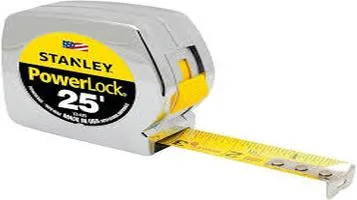A Comprehensive Review of Catering Trays: Versatility and Convenience Redefined
Catering trays are essential components in the food service industry, designed to facilitate the presentation and transportation of meals for events such as parties, corporate gatherings, weddings, and other special occasions. These trays come in various sizes and materials, including aluminum, plastic, and stainless steel, to accommodate diverse culinary needs and preferences. They are often compartmentalized to separate different food items, ensuring a neat and organized display while preserving the flavors and textures of each dish. Catering trays are not only practical for their ease of transport and serving but also enhance the aesthetic appeal of the food presentation. Their durability and versatility make them an indispensable tool for caterers, aiming to deliver a seamless and professional dining experience for their clients.

Introduction
In the world of culinary arts and event planning, catering trays have emerged as indispensable tools that combine functionality, versatility, and elegance. Whether for corporate events, family gatherings, weddings, or casual parties, catering trays have revolutionized the way food is presented and served. This review delves into the myriad advantages of catering trays, exploring their design, material, versatility, and overall impact on catering services.
Design and Material
The design of catering trays is a critical factor that contributes to their popularity. Modern catering trays come in a variety of shapes and sizes, ranging from small, individual serving trays to large, banquet-style platters. This diversity ensures that there is a perfect tray for every occasion, whether it’s a small, intimate gathering or a grand celebration.
Materials used in the manufacturing of catering trays have also evolved, with options including stainless steel, aluminum, plastic, melamine, and even eco-friendly biodegradable materials. Stainless steel trays, for instance, are known for their durability and sleek, professional appearance, making them ideal for high-end events. Aluminum trays are lightweight and disposable, offering convenience for large-scale events with minimal cleanup. Plastic and melamine trays are versatile and come in various colors and designs, suitable for both casual and formal settings. The recent trend towards environmentally friendly options has led to the introduction of biodegradable trays, which are perfect for eco-conscious events.
Versatility
One of the standout features of catering trays is their versatility. They are designed to accommodate a wide range of foods, from appetizers and finger foods to main courses and desserts. The compartmentalized designs of some trays allow for the separation of different food items, maintaining their individual flavors and presentations. This is particularly useful for events where a variety of dishes are served, ensuring that guests can enjoy a diverse culinary experience.
Catering trays are also incredibly adaptable in terms of presentation. For instance, tiered trays add a touch of elegance to any event, making them perfect for high-tea parties or dessert tables. Flat trays, on the other hand, are ideal for buffet setups, allowing guests to easily serve themselves. Some trays come with lids, which are essential for transporting food safely and maintaining its temperature. This feature is particularly beneficial for outdoor events where food needs to be kept fresh and protected from the elements.
Convenience
The convenience offered by catering trays cannot be overstated. For caterers, these trays simplify the process of food preparation, transportation, and presentation. The ability to prepare food in advance and store it in catering trays saves valuable time on the day of the event. The trays can be stacked, reducing the space required for storage and transportation. This is especially important for large events where space and time management are crucial.
Moreover, the disposable nature of some catering trays, such as those made from aluminum or biodegradable materials, significantly reduces the effort required for post-event cleanup. This not only saves time but also reduces the need for extensive dishwashing, allowing caterers to focus on providing excellent service to their clients.
Impact on Catering Services
Catering trays have a profound impact on the overall efficiency and quality of catering services. Their ability to enhance food presentation elevates the dining experience, making events more memorable for guests. The use of aesthetically pleasing trays can transform a simple buffet into a visually stunning display, adding to the ambiance of the event.
Furthermore, catering trays contribute to better portion control. By using trays with predefined compartments or sections, caterers can ensure consistent portion sizes, reducing food waste and ensuring that all guests receive an equal share. This is particularly important for large events where managing food quantities can be challenging.
Conclusion
In conclusion, catering trays are an essential component of modern catering services, offering a blend of functionality, versatility, and elegance. Their varied designs and materials cater to different event needs, while their convenience enhances the efficiency of food preparation, transportation, and presentation. The positive impact of catering trays on the overall quality of events cannot be overstated, making them a must-have for any caterer or event planner. As the catering industry continues to evolve, catering trays will undoubtedly remain a cornerstone of exceptional service and memorable dining experiences.






